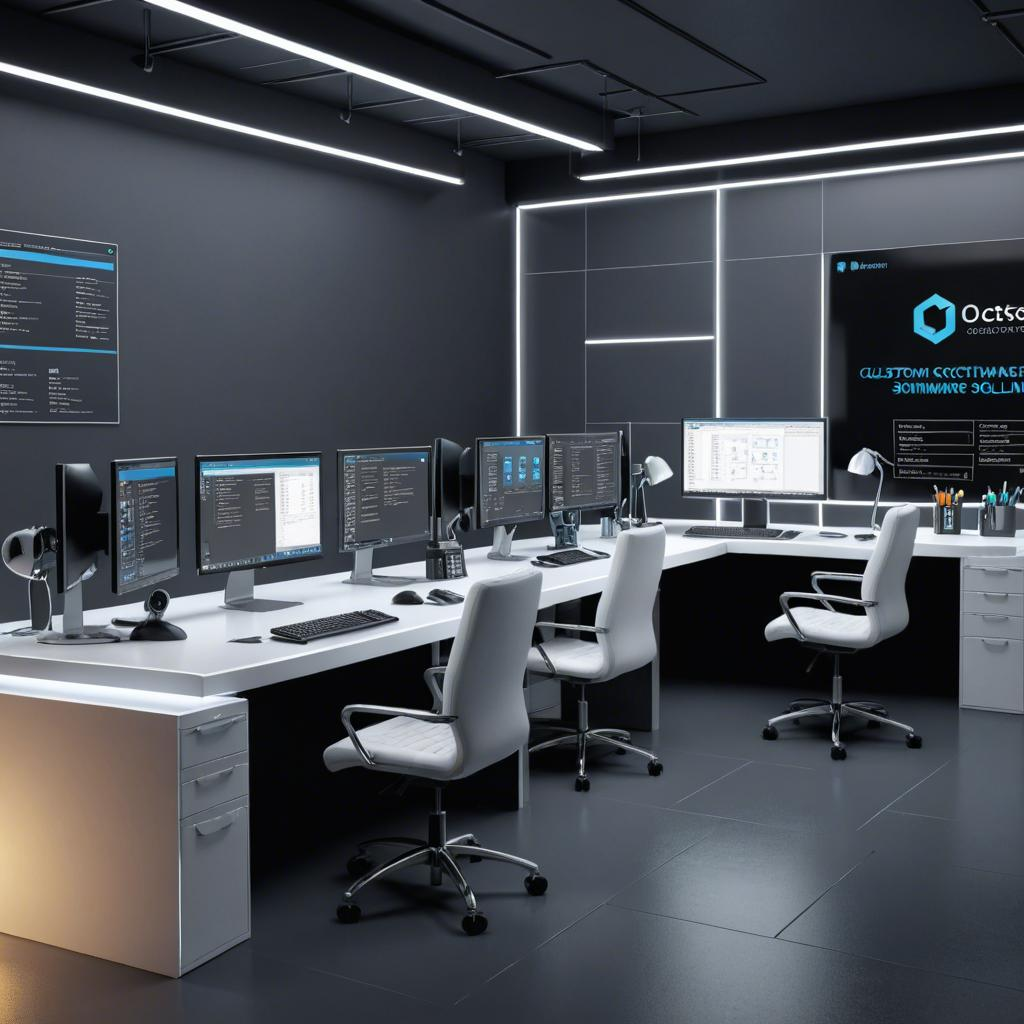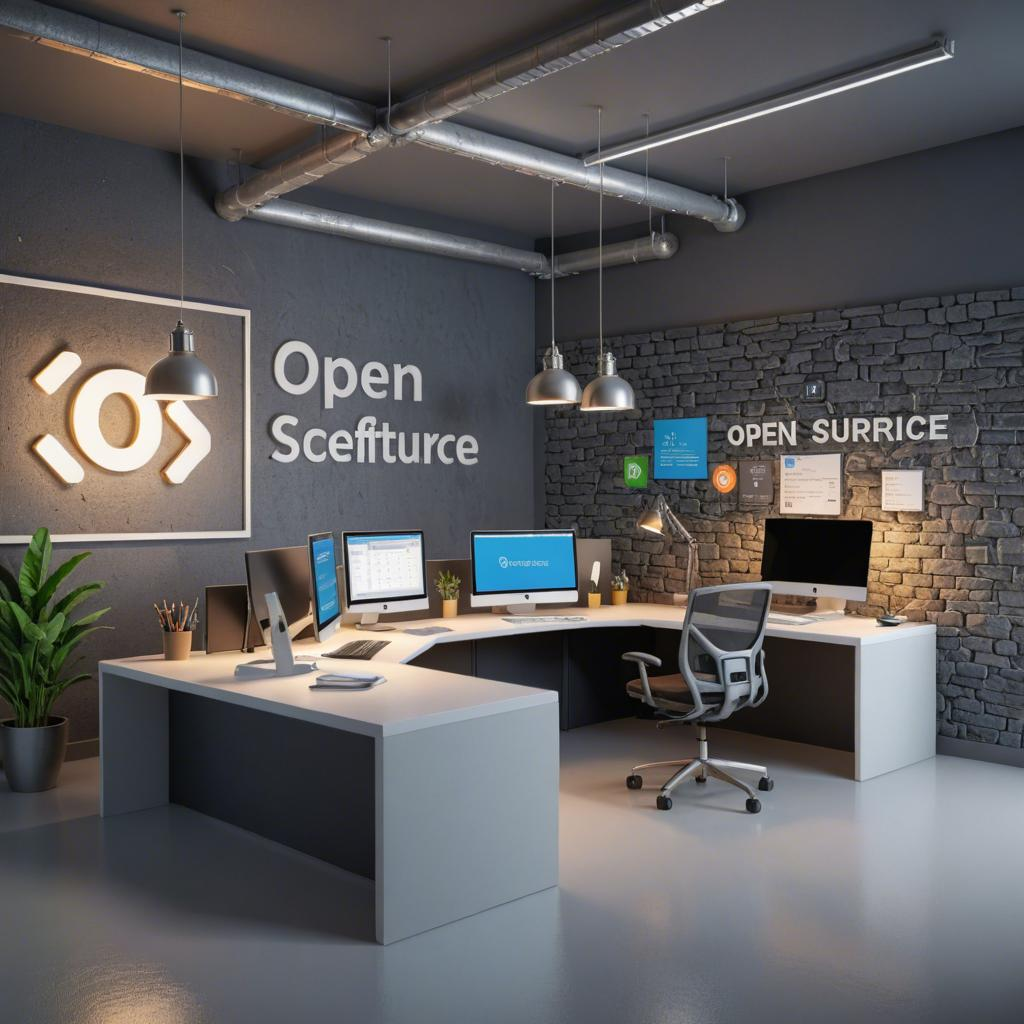How to Optimize Your Website for Better User Engagement
“Maximizing User Experience in 2025: Mobile-Friendly Design, Fast Loading Speed, Easy Navigation, Personalization, Accessibility, AI Integration, SEO Optimization, Clear CTAs, Multimedia Content, Social Media Integration, Analytics, Software Development, ERP Systems, Live Chat, User Feedback, Gamification, and Clear Content”
Introduction
In today’s digital world, having a well-designed and engaging website is essential for businesses to attract and retain customers. Our website development services offer a range of features to ensure your site provides an optimal user experience. From mobile-friendly designs and fast loading speeds to easy navigation, user-friendly interfaces, and personalization, we’ve got you covered. Additionally, we utilize the latest technology such as AI, blockchain, SEO, and analytics to enhance user engagement and build trust. With clear call-to-action buttons, the use of videos and infographics, social media integration, and live chat support, we’re dedicated to creating a website that not only looks great but also converts visitors into loyal customers.
1. Mobile-friendly design: Ensure your website is responsive and adjusts to different screen sizes for optimal user experience.
To optimize your website for better user engagement, one crucial aspect is ensuring mobile-friendliness. With an increasing number of users accessing websites via mobile devices, having a responsive design that adjusts to various screen sizes is essential. This not only improves user experience but also impacts search engine rankings. According to Google’s Mobile-Friendly Test, sites that aren’t optimized for mobile may rank lower in search engine results pages (SERPs), particularly in cities like Mumbai or Delhi where mobile usage is high. Therefore, prioritize mobile-friendly design, focusing on fast loading times, easy navigation, and readability to keep users engaged and enhance your online presence. Other optimization techniques include effective use of keywords, high-quality content, and technical SEO practices such as on-page and off-page optimization. Additionally, consider leveraging social media and influencer marketing to boost engagement and reach a wider audience.
2. Fast loading speed: Reduce page load times to keep users engaged and prevent them from leaving your site.
To optimize your website for better user engagement, fast loading speed is a crucial factor. Users today have short attention spans and expect websites to load quickly. Long page load times can lead to frustration, resulting in higher bounce rates and decreased engagement. According to a study by Google, 53% of mobile site visitors leave a page that takes longer than three seconds to load. Therefore, reducing page load times is essential to keep users engaged and prevent them from leaving your site.
Techniques to improve website loading speed include optimizing images, using a content delivery network (CDN), enabling browser caching, minimizing HTTP requests, and minifying CSS and JavaScript files. These improvements can significantly reduce page load times, making your website more user-friendly and providing a better user experience.
Moreover, fast loading speed is not only important for user engagement but also for search engine optimization (SEO). Google’s algorithm prioritizes websites with fast loading times, leading to higher search engine rankings. In today’s competitive digital landscape, having a website that loads quickly can give you a competitive edge and help you attract and retain more users.
For instance, in the bustling city of Mumbai, a business that sells fashion accessories online can significantly improve user engagement and SEO by optimizing its website’s loading speed. By implementing techniques such as image optimization and enabling browser caching, the business can reduce page load times and provide a better user experience, ultimately leading to increased sales and customer satisfaction.
3. Easy navigation: Create a clear and intuitive site structure to help users find what they’re looking for quickly.
When it comes to optimizing your website for better user engagement, easy navigation is key. A clear and intuitive site structure helps users find what they’re looking for quickly, reducing bounce rates and increasing time on site. This not only improves the user experience but also has a positive impact on search engine rankings.
To create an effective site structure, consider organizing content into logical categories and using a consistent menu layout. Utilize clear and descriptive labels for pages and make sure they are easily accessible from the main navigation. Additionally, consider implementing a search function to help users locate specific content.
For instance, a technology company based in Gurgoan, India, might have categories for “Solutions,” “Services,” and “Resources.” Under “Solutions,” they could have subcategories for “ERP,” “CRM,” and “AI.” This clear and hierarchical structure makes it easy for users to find the information they need, improving overall engagement and satisfaction.
Remember, the goal is to make it as easy as possible for users to find what they’re looking for on your website. By implementing an effective site structure, you’ll not only improve user experience but also increase the chances of them converting or taking a desired action.
4. User-friendly interface: Design an interface that is visually appealing and easy to use.
To optimize your website for better user engagement, it’s crucial to design an interface that is visually appealing and easy to use. A user-friendly interface can significantly enhance the user experience, leading to increased time spent on your site and higher conversion rates.
Firstly, consider using a clean and uncluttered design with a clear hierarchy of information. This will help users navigate your site easily and find what they’re looking for quickly. Use intuitive icons, labels, and calls-to-action to guide users through the site.
Secondly, ensure your website is mobile-responsive. With more and more users accessing websites on their mobile devices, it’s essential that your site looks great and functions seamlessly on all screen sizes.
Lastly, consider using a font size and style that is easy to read, especially for longer blocks of text. Use contrasting colors for text and background to make it stand out. And don’t forget about accessibility – ensure your site is usable for all users, including those with disabilities.
By focusing on these design elements, you can create a user interface that not only looks great but is also easy to use, leading to increased user engagement and better overall performance of your website.
For instance, a software development company based inNew YorkCity might prioritize a user-friendly interface for their client’s e-commerce website, ensuring a seamless shopping experience on both desktop and mobile devices. This can lead to higher sales and increased customer satisfaction.
5. Personalization: Customize the user experience based on their preferences and behavior.
To optimize your website for better user engagement, personalization is a crucial element. Personalization customizes the user experience based on their preferences and behavior, leading to increased satisfaction and loyalty. This can be achieved through various techniques, such as using cookies to remember user preferences or implementing machine learning algorithms to analyze user data and provide tailored content.
For instance, a user who frequently visits a website about fashion may be shown personalized recommendations based on their past purchases and browsing history. Similarly, an e-commerce site can use location-based targeting to offer discounts or promotions to users in specific cities, such as Mumbai orNew York.
Personalization goes beyond just displaying customized content. It can also include personalized messaging and user interfaces. For example, a website can address users by name or use a color scheme that aligns with their preferred aesthetic. These small touches can make a big difference in user engagement and retention.
Moreover, personalization can be integrated with various digital marketing channels, such as search engine optimization (SEO), social media advertising, and email marketing. By tailoring content to individual users, businesses can improve click-through rates, conversion rates, and overall engagement.
In conclusion, personalization is an essential aspect of website optimization for better user engagement. By understanding user preferences and behavior, businesses can provide a customized experience that resonates with their audience and leads to increased loyalty and engagement. Whether it’s through cookies, machine learning algorithms, or personalized messaging, personalization is a powerful tool that can set your website apart from the competition.
6. Accessibility: Make your website accessible to users with disabilities.
To optimize your website for better user engagement, it’s essential to ensure accessibility for users with disabilities. This means making your website usable by all individuals, regardless of their ability. According to the World Health Organization, approximately 15% of the global population lives with some form of disability. By making your website accessible, you not only expand your reach but also demonstrate your commitment to inclusivity.
Accessibility features can include text alternatives for non-text content, captions and transcripts for audio and video content, and keyboard-navigable menus. Additionally, proper use of alt text for images and proper labeling of form elements are crucial for users who rely on screen readers.
To implement these features, consider consulting with an accessibility expert or using automated tools to check for compliance with Web Content Accessibility Guidelines (WCAG). These guidelines provide a standard for making web content more accessible to people with disabilities.
For instance, a website developer in Gurgoan, India, could help ensure your website adheres to these guidelines, making it accessible to users in that region and beyond. By prioritizing accessibility, you not only enhance user experience for a larger audience but also improve your website’s overall search engine optimization (SEO) performance.
7. Use of AI: Implement AI chatbots or recommendation systems to enhance user engagement and provide personalized experiences.
To optimize your website for better user engagement, consider implementing AI technologies such as chatbots or recommendation systems. AI chatbots can provide instant responses to user queries, improving the user experience and reducing the workload on customer support teams. Recommendation systems, on the other hand, can suggest personalized content based on user preferences and behavior, increasing the time spent on the site and enhancing overall engagement.
Incorporating AI into your website strategy can provide numerous benefits, particularly in today’s digital landscape where users demand instant gratification and personalized experiences. For instance, in the city of Mumbai, a fashion e-commerce site may use AI-powered recommendation systems to suggest outfits based on a user’s browsing history and preferences. This not only keeps users engaged but also increases the likelihood of a sale.
Moreover, AI can be integrated into various aspects of a website, from search functions to content generation. For example, an SEO company in Chennai may use AI algorithms to optimize content for search engines, ensuring that the site ranks high inSERPs. Similarly, a blockchain development company in Gurgoan may use AI chatbots to assist users in understanding the complexities of blockchain technology and guide them through the development process.
Overall, AI is an essential tool for optimizing user engagement and providing personalized experiences on websites. By implementing AI technologies, businesses can improve user experience, increase time spent on the site, and ultimately drive growth and success.
8. Blockchain technology: Use blockchain to secure user data and build trust.
Blockchain technology has emerged as a game-changer in the digital world, offering unprecedented security and trust for user data. By using this decentralized, distributed database, websites can ensure that sensitive information is securely stored and shared only with authorized parties. Blockchain’s immutable and transparent nature also eliminates the need for intermediaries, reducing the risk of fraud and data breaches. For instance,blockchain development companiescan build trust in supply chain management systems by implementing blockchain technology, allowing all stakeholders to have access to real-time data and transactions. In the realm of SEO, technical SEO experts can leverage blockchain to secure user data and enhance privacy, ultimately leading to better user engagement and loyalty. In cities like Mumbai and Bangalore, where technology and innovation are at the forefront, blockchain development is gaining significant traction, offering new opportunities for businesses and individuals alike.
9. Search engine optimization (SEO): Optimize your website for search engines to attract more organic traffic.
Search Engine Optimization(SEO) is an essential strategy for attracting organic traffic to your website. By optimizing your site for search engines, you can improve your visibility in search engine results pages (SERPs), making it easier for potential customers to find you. Technical SEO involves optimizing your website’s backend structure, such as improving site speed, mobile-friendliness, and XML sitemaps. On-page SEO focuses on optimizing individual webpages, including keyword research, meta tags, and content. Off-page SEO refers to activities outside of your website, such as building backlinks and social media marketing, that can boost your site’s authority and credibility. Local SEO is important for businesses with physical locations, as it helps them appear in local search results. No matter where your business is located, be itNew York,USA, or Mumbai, India, implementing effective SEO strategies can help increase user engagement and drive growth.
10. Clear call-to-action (CTA) buttons: Use prominent and clear CTAs to guide users towards desired actions.
To optimize your website for better user engagement, it’s essential to include clear call-to-action (CTA) buttons. These buttons should be prominently placed and easily recognizable to guide users towards desired actions. CTAs are crucial for converting visitors into customers, especially for businesses in competitive industries such as ERP development or AI development.
For instance, an SEO company may use a CTA like “Get a Free SEO Audit” to attract potential clients. A software development company might use “Start Your Project Now” to encourage users to begin the development process. The CTA should be designed to stand out from the rest of the page, using contrasting colors and font sizes.
Moreover, location-based CTAs can be effective for businesses targeting specific cities. For example, anInfluencer Marketingagency in Mumbai could use “Connect with LocalInfluencers” as their CTA. CTAs should also be mobile-friendly, as a significant portion of web traffic comes from mobile devices.
In conclusion, clear and prominent CTAs are essential for optimizing your website for better user engagement. They help guide users towards desired actions, increasing the likelihood of conversions. CTAs are particularly crucial for businesses in competitive industries and those targeting specific cities.
11. Use of videos: Incorporate videos to engage users and provide additional information.
To enhance user engagement on your website, consider using videos. Videos are an effective tool to capture users’ attention and provide additional information about your products or services. They can be particularly useful for explaining complex concepts, demonstrating how a product works, or showcasing behind-the-scenes content. Incorporating videos into your website can help reduce bounce rates, increase time on site, and improve overall user experience.
For instance, a software development company in Gurgoan could create a video series explaining the benefits and features of their custom software solutions. An SEO company inSan Franciscocould produce a video tutorial on how to optimize a website for local SEO. Or, an AI development company in Chennai could create a video showcasing the capabilities of their artificial intelligence technology.
Videos can also be shared on social media platforms like YouTube, Facebook, and Instagram to reach a wider audience. By using captions and transcripts, videos can also be optimized for search engines, making them a valuable asset for your website’s SEO strategy. Overall, incorporating videos into your website is a cost-effective and engaging way to provide users with valuable information and enhance their overall experience.
12. Use of infographics: Use infographics to make complex information more digestible and engaging.
When it comes to optimizing your website for better user engagement, there are various strategies that can be employed. One such strategy is the use of infographics. Infographics are visual representations of complex data or information, making them an excellent tool for making complex topics more digestible and engaging for users. They are particularly useful in industries such as ERP development, software development, SEO, AI development, and blockchain development, where technical jargon and intricate concepts are common.
Infographics can help break down complex information into easily understandable parts, making them an effective way to communicate with users. For instance, an SEO company might use an infographic to explain the various components of search engine optimization, including on-page optimization, off-page optimization, and technical SEO. This can help users grasp the concepts more quickly and retain the information better.
Moreover, infographics are highly shareable on social media platforms such as LinkedIn, Instagram, Facebook, and Twitter. This can help increase your website’s reach and visibility, leading to more traffic and engagement. For example, a software development company based in Chennai could create an infographic on the benefits of custom software development and share it on LinkedIn. This could potentially attract the attention of businesses inDubaiorSingaporelooking for software development services.
Overall, infographics are a powerful tool for optimizing your website for better user engagement. They can help simplify complex information, increase user understanding, and boost your online presence through social media sharing.
13. Use of social media: Integrate social media into your website to encourage user engagement and sharing.
To enhance user engagement on your website, integrating social media is a must. Social media platforms like Facebook, Instagram, LinkedIn, and Twitter are widely used for business promotion and customer interaction. By adding social media icons and feeds to your website, you can encourage users to share your content, increasing your online presence.
Moreover, social media integration can boost your SEO efforts. Search engines like Google favor websites that offer an engaging user experience. Social media signals, such as likes, shares, and comments, are considered as social proof and can positively impact your website’s ranking onSERPs.
Incorporating social media into your website also allows for real-time communication with your audience. You can respond to queries, feedback, or comments promptly, enhancing your brand reputation and customer satisfaction.
For instance, a software development company based in Gurgoan can integrate social media into its website to showcase its latest projects, engage with potential clients, and build a community of followers. This not only improves user engagement but also increases brand awareness and leads generation.
In conclusion, social media integration is an essential aspect of website optimization for better user engagement. It not only encourages user interaction and sharing but also positively impacts your SEO efforts. So, consider integrating social media into your website today and start building a strong online presence.
14. Use of analytics: Use analytics to track user behavior and optimize the user experience.
To optimize your website for better user engagement, analytics plays a crucial role. By tracking user behavior, you can gain insights into their preferences and interests. This information can then be used to optimize the user experience and enhance engagement. For instance, identifying the most popular pages and content can help prioritize resources and improve accessibility. Additionally, understanding user flow and drop-offs can help address pain points and reduce bounce rates. Analytics can also provide valuable data on demographics, location, and device usage, enabling targeted marketing campaigns. In today’s competitive digital landscape, leveraging analytics is essential for staying ahead of the curve and delivering a personalized and engaging user experience. Whether you’re based in Mumbai orSeattle, optimizing your website for user engagement is key to success. By focusing on analytics, you can gain a deeper understanding of your audience and tailor your content and design to meet their needs, resulting in increased engagement and better overall performance.
15. Use of software development: Use modern software development techniques to build a fast, reliable, and scalable website.
To optimize your website for better user engagement, it’s crucial to use modern software development techniques. These methods ensure your site is fast, reliable, and scalable. By employing techniques such as Agile development, DevOps practices, and Continuous Integration and Delivery, your website can adapt quickly to user needs and market trends.
Moreover, incorporating responsive design and mobile-first development will enhance the user experience across various devices. This is particularly important in today’s digital landscape, where users expect seamless browsing on their preferred device.
Furthermore, implementingSearch Engine Optimization(SEO) best practices, including technical SEO, on-page optimization, and local SEO, will help improve your website’s visibility and attract more organic traffic. This can lead to increased user engagement and potential conversions.
Lastly, integrating tools like Google Analytics and heatmaps can provide valuable insights into user behavior, allowing you to make data-driven decisions to optimize your website and create a better user experience.
In cities like Chennai or Mumbai, where digital innovation is thriving, implementing these software development techniques and optimization strategies can give you a competitive edge and help attract and retain users.
16. Use of ERP systems: Implement ERP systems to manage and streamline business processes and improve user experience.
ERP, or Enterprise Resource Planning, systems are essential tools for managing and streamlining business processes. By implementing an ERP system, organizations can improve user experience, increase efficiency, and reduce costs. ERP systems integrate various business functions such as accounting, inventory management, customer relationship management, and supply chain management. This integration allows for real-time data sharing and analysis, enabling businesses to make informed decisions quickly.
Moreover, ERP systems can be customized to meet the unique needs of different industries and organizations.ERP development companiescan provide tailored solutions, ensuring that the system aligns with the specific business processes and workflows of the client. Implementing an ERP system can also lead to improved communication and collaboration between departments, as all data is accessible in one place.
For instance, a manufacturing company in Delhi, India, can benefit significantly from an ERP system. It can manage production, inventory, and supply chain operations in real-time, reducing lead times and improving customer satisfaction. Additionally, the system can provide insights into production costs, enabling the company to make data-driven decisions and optimize its operations. Overall, ERP systems are a valuable investment for any organization looking to improve its business processes, increase efficiency, and provide a better user experience.
17. Use of live chat: Provide a live chat feature to help users with any questions or issues they may have.
To enhance user engagement on your website, consider implementing a live chat feature. This real-time communication tool allows users to connect with your team instantly, addressing any queries or concerns they may have. Live chat is particularly beneficial for complex products or services, such as ERP solutions, where users may require clarification before making a purchase decision. Influencer marketing can also be an effective strategy to promote the use of live chat. For instance, partnering with a popular influencer in the tech industry in cities likeNew YorkorSan Franciscocan help increase brand awareness and drive traffic to your website. By providing quick and effective support through live chat, you can improve user experience, reduce bounce rates, and ultimately, boost conversions. Additionally, technical SEO best practices like optimizing your website for mobile devices and ensuring fast load times can also contribute to better user engagement.
18. Use of user feedback: Use user feedback to make improvements and enhance the user experience.
When it comes to optimizing your website for better user engagement, incorporating user feedback is a crucial step. By actively listening to your audience, you can identify areas for improvement and enhance the user experience. User feedback can come from various sources, including social media, email, and chatbots. For instance, throughGoogle My Business, businesses can receive and respond to reviews from customers, helping to build trust and credibility. Influencer marketing is another effective way to gather user feedback. Partnering with influencers in your industry can provide valuable insights into what resonates with your audience and what improvements can be made. Search engine optimization (SEO) is another area where user feedback is essential. By analyzing user behavior on your website, you can optimize your on-page and off-page SEO to better meet their needs. Local SEO is also important, especially for businesses with a physical presence. Responding to user queries and feedback on local search platforms likeGoogle My Businesscan help improve your online reputation and attract more customers. Ultimately, incorporating user feedback into your website optimization strategy can lead to increased engagement, higher customer satisfaction, and better business performance. For instance, inNew YorkCity, a local restaurant may use user feedback fromGoogle My Businessto improve its menu offerings and enhance the dining experience, leading to more repeat business and positive online reviews.
19. Use of gamification: Implement gamification techniques to engage users and encourage desired behaviors.
To optimize your website for better user engagement, consider implementing gamification techniques. Gamification is the use of game elements in non-game contexts to engage users and encourage desired behaviors. This can be particularly effective for websites that require user interaction, such as ERP systems or AI applications. By incorporating elements like points, badges, leaderboards, and challenges, you can make the user experience more enjoyable and motivate users to complete tasks or explore new features. For instance, an e-learning platform could offer badges for completing courses or leaderboards displaying learners’ progress, while a fitness app could reward users for hitting daily activity goals. Gamification can also be used to increase user retention and loyalty, making it an essential strategy for businesses seeking to enhance their online presence in cities likeNew York,London, orDubai. By incorporating gamification into your website design, you can create a more engaging and interactive user experience that drives user behavior and keeps them coming back for more.
20. Use of clear and concise content: Use clear and concise content to ensure users understand the information presented on your website.
When optimizing your website for better user engagement, clarity and concise content play a pivotal role. Users should be able to easily comprehend the information presented on your site, whether it’s about your products or services, or simply informational content. This not only enhances the user experience but also helps search engines to better understand and index your site, improving your search engine rankings.
For instance, instead of using jargon or lengthy sentences, use simple and straightforward language. Break down complex ideas into smaller, digestible pieces. Use bullet points, numbered lists, and subheadings to make your content more scannable. Additionally, ensure that your content is visually appealing, using images, videos, and infographics to supplement text.
Furthermore, consider the user’s location and tailor your content accordingly. For example, if your target audience is in Chennai, use local references and keywords to make your content more relatable. This can also help improve your local SEO and attract more organic traffic.
Lastly, remember that user engagement goes beyond just the content itself. Ensure that your website is easy to navigate, loads quickly, and is mobile-friendly. These factors can significantly impact user engagement and should not be overlooked.
Conclusion
In today’s digital age, having a website that delivers an optimal user experience is crucial. Our list of website features includes mobile-friendly design, fast loading speed, easy navigation, user-friendly interface, personalization, accessibility, AI implementation, SEO optimization, clear call-to-action buttons, use of videos, infographics, social media, analytics, software development, ERP systems, live chat, user feedback, gamification, and clear and concise content. By incorporating these features into your website, you can ensure a positive user experience, increased engagement, and improved business performance.
Frequently AskQuestion?
What is mobile-friendly design, and why is it important for user experience?
A: Mobile-friendly design refers to a website that adjusts to different screen sizes and resolutions, providing an optimal viewing and interaction experience for users on mobile devices. It’s important for user experience because an increasing number of users access websites on their mobile devices. A mobile-friendly design ensures faster loading times, easier navigation, and readability, leading to increased engagement and improved online presence.
How can fast loading speed enhance user experience?
A: Fast loading speed is essential for user experience because users expect websites to load quickly. Long loading times can lead to frustration, higher bounce rates, and decreased engagement. By reducing page load times, you can keep users engaged and prevent them from leaving your site. Techniques to improve website loading speed include optimizing images, using a content delivery network (CDN), enabling browser caching, and minifying CSS and JavaScript files.
What is easy navigation, and how can it improve user experience?
A: Easy navigation is a clear and intuitive site structure that helps users find what they’re looking for quickly. It can significantly enhance user experience by reducing bounce rates and increasing time on site. By organizing content into logical categories and using a consistent menu layout, you can create an effective site structure that makes it easy for users to find the information they need.
What is a user-friendly interface, and how can it improve user experience?
A: A user-friendly interface is a visually appealing and easy-to-use design that makes it simple for users to interact with your website. It can significantly improve user experience by increasing engagement and reducing frustration. Techniques for creating a user-friendly interface include using a clean and uncluttered design, intuitive icons and labels, and keyboard-navigable menus.
What is personalization, and how can it improve user experience?
A: Personalization is the customization of the user experience based on their preferences and behavior. It can significantly improve user experience by making users feel valued and understood. Techniques for personalization include using cookies to remember user preferences, implementing machine learning algorithms to analyze user data, and providing tailored content and recommendations.
What is accessibility, and why is it important for user experience?
A: Accessibility refers to making your website usable by all individuals, regardless of their ability. It’s important for user experience because it expands your reach and demonstrates your commitment to inclusivity. Accessibility features can include text alternatives for non-text content, captions and transcripts for audio and video content, and keyboard-navigable menus.
What is AI chatbot, and how can it enhance user experience?
A: An AI chatbot is a computer program designed to simulate human conversation. It can enhance user experience by providing instant responses to user queries, reducing the workload on customer support teams, and offering personalized recommendations based on user behavior.
What is blockchain technology, and how can it improve user experience?
A: Blockchain technology is a decentralized, distributed database that ensures secure and transparent data storage and sharing. It can improve user experience by providing an immutable and tamper-proof record of transactions, increasing trust and security.
What is search engine optimization (SEO), and how can it improve user experience?
A: Search engine optimization (SEO) is the process of optimizing a website to rank higher in search engine results pages (SERPs). It can improve user experience by making it easier for users to find the information they need, increasing website traffic, and enhancing overall online presence.
What is a call-to-action (CTA) button, and how can it improve user experience?
A: A call-to-action (CTA) button is a clickable element that prompts users to take a desired action, such as making a purchase or subscribing to a newsletter. It can improve user experience by guiding users towards completing a desired action, increasing conversions, and enhancing overall user engagement.
What are infographics, and how can they enhance user experience?
A: Infographics are visual representations of complex data or information. They can enhance user experience by making complex topics more digestible and engaging, increasing user understanding, and providing a more memorable way to present information.
What is social media integration, and how can it enhance user experience?
A: Social media integration is the process of connecting a website to various social media platforms, allowing users to share content and engage with your brand on multiple channels. It can enhance user experience by increasing reach and visibility, providing real-time communication with users, and encouraging user-generated content.
What is analytics, and how can it improve user experience?
A: Analytics refers to the process of collecting, analyzing, and reporting data on user behavior and website performance. It can improve user experience by providing valuable insights into user preferences, identifying pain points, and enabling data-driven decisions to optimize the user experience.
What is software development, and how can it enhance user experience?
A: Software development refers to the process of designing, building, and maintaining software applications. It can enhance user experience by creating fast, reliable, and scalable websites, incorporating modern development techniques, and implementing user feedback to continually improve the user experience.
What are ERP systems, and how can they enhance user experience?
A: Enterprise resource planning (ERP) systems are business software solutions that manage and integrate various business processes, such as accounting, inventory management, and customer relationship management. They can enhance user experience by providing real-time data sharing and analysis, improving communication and collaboration between departments, and streamlining business processes.
What is live chat, and how can it enhance user experience?
A: Live chat is a real-time communication tool that allows users to connect with your team to address any queries or concerns they may have. It can enhance user experience by providing quick and effective support, reducing bounce rates, and improving overall user engagement.
What is user feedback, and how can it enhance user experience?
A: User feedback refers to the information and insights provided by users about their experiences with a website or product. It can enhance user experience by identifying areas for improvement, addressing pain points, and enabling data-driven decisions to optimize the user experience.
What is gamification, and how can it enhance user experience?
A: Gamification refers to the use of game elements, such as points, badges, and leaderboards, in non-game contexts to engage users and encourage desired behaviors. It can enhance user experience by making the user experience more enjoyable and motivating users to complete tasks or explore new features.
What is clear and concise content, and how can it enhance user experience?
A: Clear and concise content refers to information that is easy to understand and free from unnecessary jargon or lengthy sentences. It can enhance user experience by ensuring users comprehend the information presented on your website, improving overall user engagement, and making it easier for search engines to understand and index your site.






